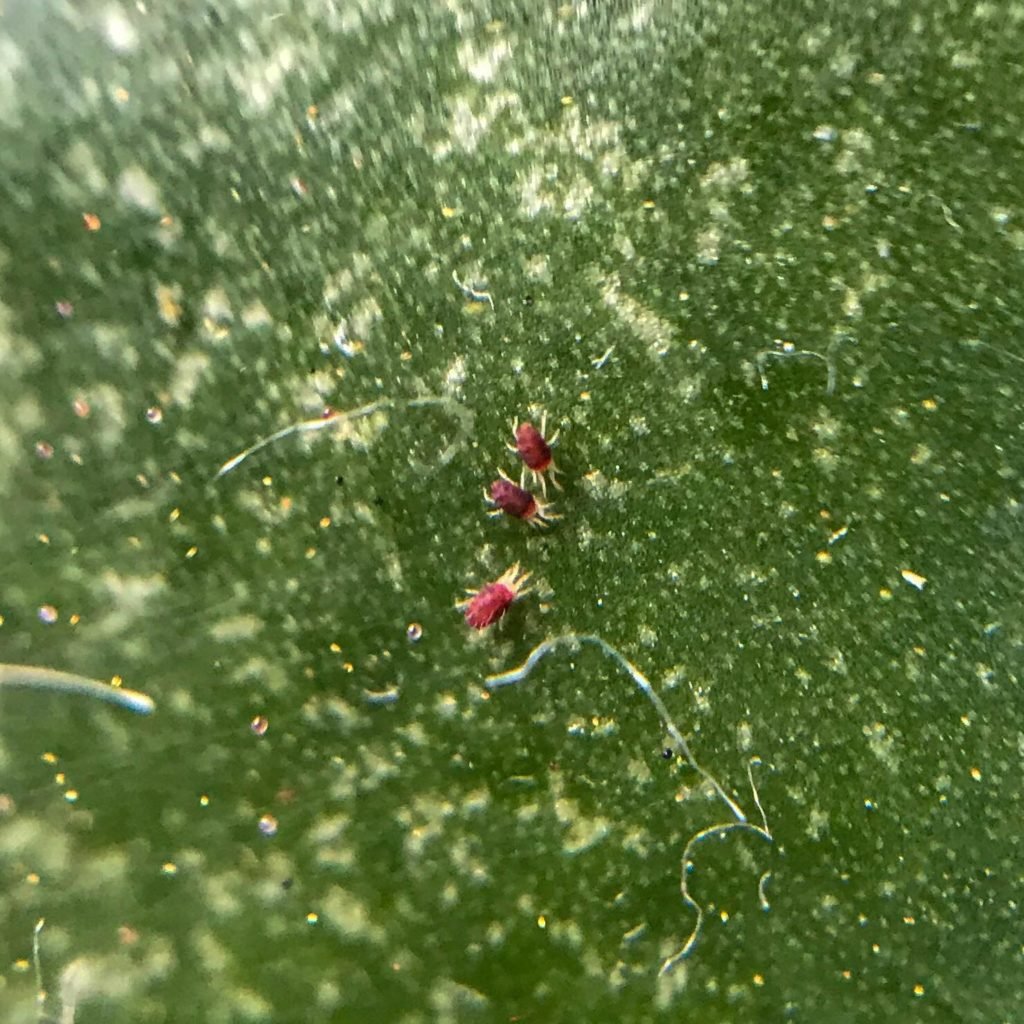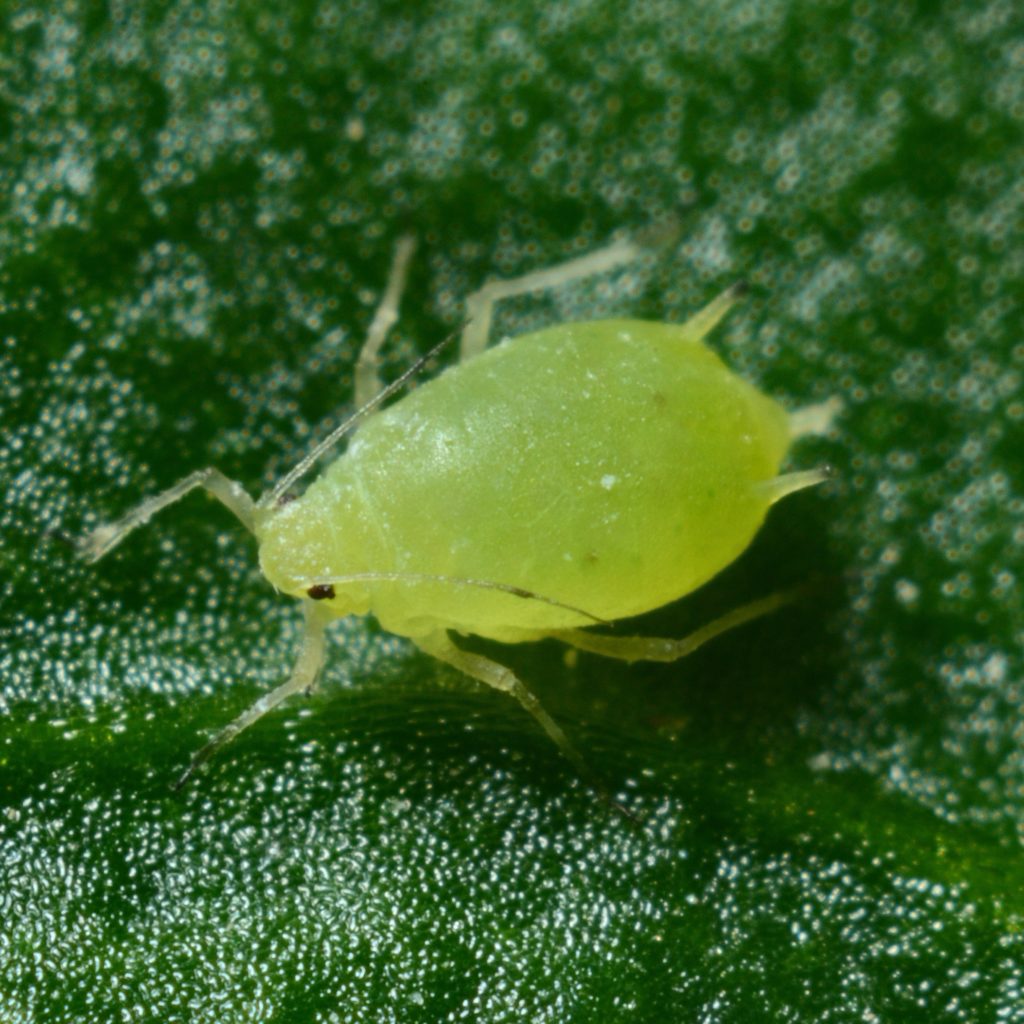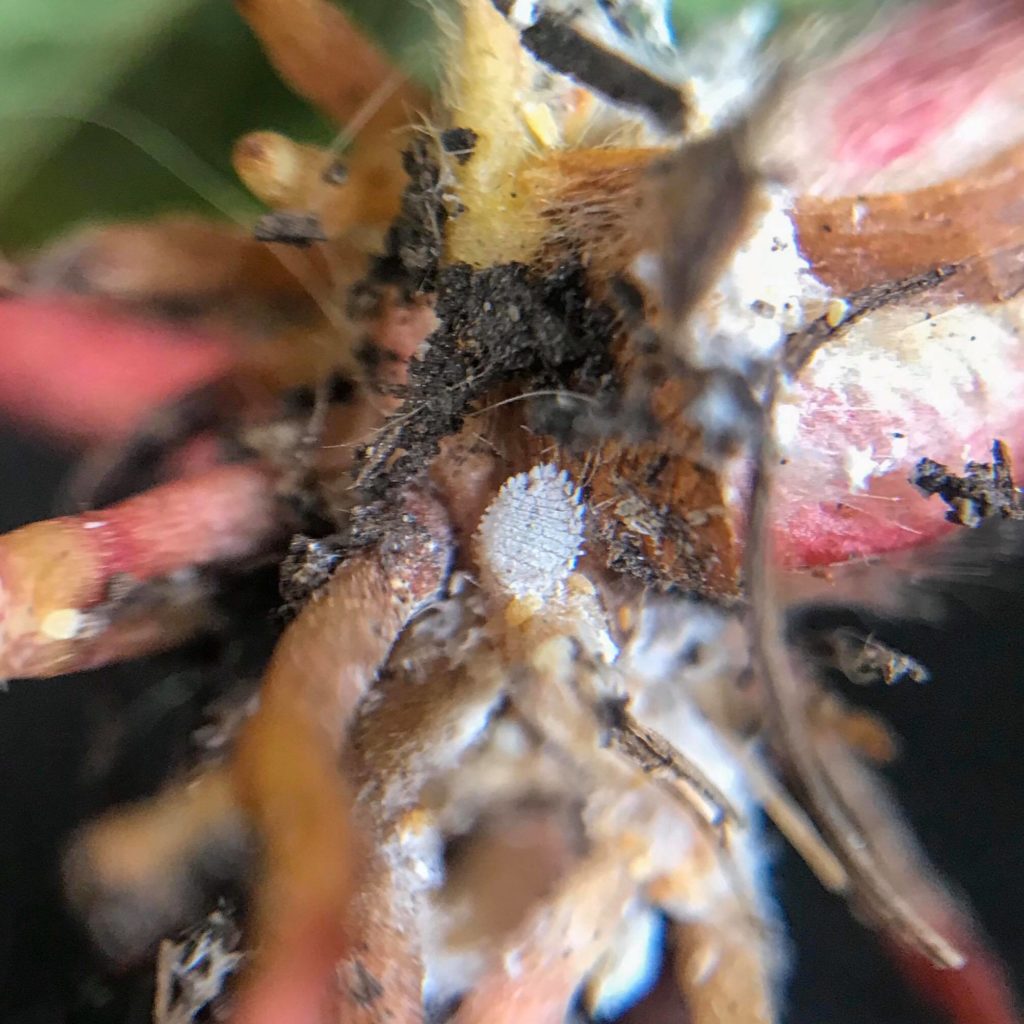Spider Mites are one of the most common and most destructive houseplant pests. They are very tiny with spider like bodies and feed on the sap from the plant. Spider Mites can reproduce quite quickly, with the female laying hundreds of eggs at a time, causing infestations to start within days. They also thrive in dry conditions. This is why providing a higher humidity can help stop infestations from starting.

Spider Mites Quick Overview
| Identification | Reddish brown with spider like bodies |
| Symptoms | Mottled and browning leaves, curling or shrivelling leaves and yellowing marks |
| Treatment | Rinse the plant, higher humidity, insecticidal soaps and neem oil |
What are Spider Mites?
Spider Mites are extremely small and feed on the chlorophyll in the plants foliage and flowers. They have spider like bodies and are less than 1mm in length when they are adults. They are commonly red in colour but can also be brown, yellow or green. Spider Mites live in colonies and can be hard to spot. They’re typically found on the underside of the leaves and between the leaf joints. They can be easily identified by the webbing they leave around the plants stem and foliage.
Spider Mites Life Cycle
There are five stages of a Spider Mites life cycle and that is; eggs, larva, first nymphal stage (protonymph), second nymphal stage (deutonymph) and adults. When in the correct conditions, they can develop from eggs to becoming adults within 5-20 days. Adult Spider Mites only live for about 3-4 weeks however, the females can start laying eggs at 5 days old. They can reproduce quite quickly, with the female laying hundreds of eggs at a time.
Where do Spider Mites come from?
Spider Mites can be bought into your home on shoes, clothing or pets, but they’re most commonly bought in by infected plants. It’s best to check and quarantine any new plants before you add them into your collection. Always check the underside of the leaves, stems and new growth for any unwanted pests.
Damage caused by Spider Mites
Severely infested plants will suffer quite badly and it can even lead to plant death. Some common symptoms that your plant is suffering with Spider Mites are:
- Mottled leaves
- Browning leaves
- Curled or shrivelling leaves
- Yellow speckled marks
- Deformed new growth
Plants that are suffering from Spider Mites will look unhealthy and stressed. If you notice any of your houseplants with these issues, you should check and treat them immediately.
How to get rid of Spider Mites
The first thing you should do if you find Spider Mites on one of your houseplants is to isolate it and check all surrounding plants. You should start treating your plants straight away. When treating Spider Mites, you might have to do more than one treatment to get rid of them completely.
Organic control
Rinse the Foliage
If you’ve found out your plant is suffering from a Spider Mites infestation, you can try wiping the leaves and rinsing the plant down being sure to get the underside of the leaves and in the leaf joints where they attack most. You might have to follow this method every few days to make sure they’re eliminated completely.
Insecticidal Soap
Another method you can try is making a homemade solution. Simply wipe the leaves and make up a mix of 2 tablespoons vegetable oil and half tablespoon dishwashing detergent in a litre of water and spray it all over your plant, making sure to get the underside of the leaves and in the leaf joints. This will suffocate any of the adult Spider Mites still on your plant. You’ll need to repeat this method every few days. You can also use a pre-mixed insecticidal soap from your local store.
Neem Oil
One of the most popular insecticides people like to use is Neem oil. It’s a natural insecticide that will also discourage new Spider Mite infestations on your plant. You can either buy a Neem oil concentrate that you mix with water or a Neem oil that is already ready to use. Click here for 3 essential oils to keep Spider Mites at bay.
Spray the leaves and stems of the plant with the solution and it will kill the Spider Mites on contact and others will die when they try to feed on the Neem oil covered leaves.
Beneficial Bugs
Beneficial bugs are also a great way to treat and prevent pest infestations. There are a few bugs that will eat Spider Mites and some other common pests like Thrips. Predatory Mites, Lady Bugs and Lacewings are just a few that will happily eat and get rid of Spider Mites for you.
Prevention
Spider Mites are definitely one of the most common and destructive houseplant pests. These pests like a hot, dry environment so increasing the humidity level can help keep them away. There are a few other things you can do to try and prevent another Spider Mite infestation. These are:
- Check new plants for pests or isolating new plants for up to a week.
- Check your plants regularly for pests.
- Trim off any dead or dying leaves.
- Wipe down leaves if you notice them getting dusty.
- Keeping your plants healthy. A healthy plant will be able to handle an infestation better than those that aren’t as happy.
- Isolate any plants that have pests.
Following these steps will help to avoid any unwanted pest infestations in the future.


